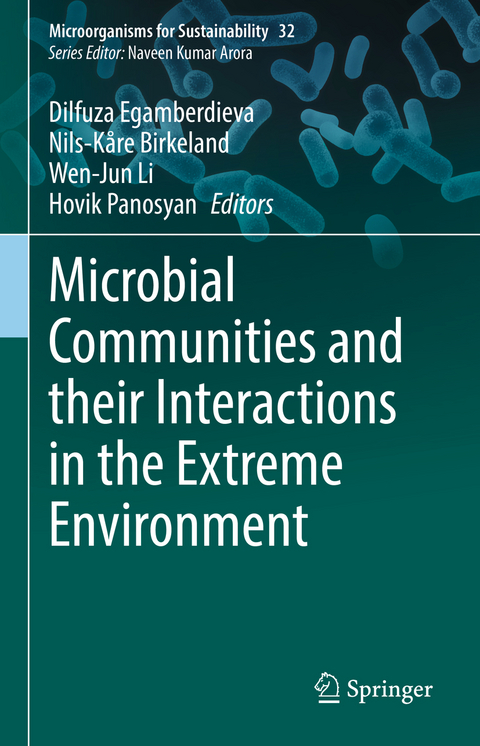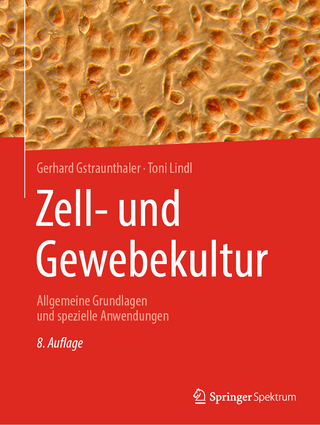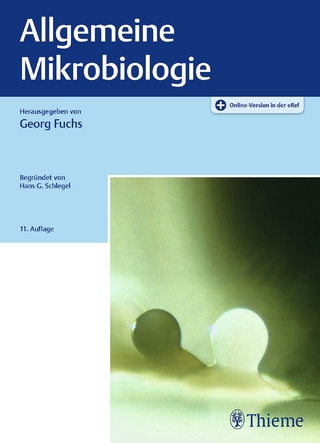
Microbial Communities and their Interactions in the Extreme Environment
Springer Verlag, Singapore
978-981-16-3730-8 (ISBN)
This second edition of the book entitled “Microbial Communities and Interactions in extreme environments” focus on thermophilic and halophilic extremophiles from various ecosystems, their biodiversity, interactions with other organisms and functions within their hostile environment. Biotechnology of extremophiles and their potential agricultural and industrial applications is the focus of this edition. However, extremophiles may cope with their challenging environments. Information on biodiversity of extremophiles and their interactions with the surrounding biomes helps in understanding their ecology and functions within their respective extreme environments. This book is of interest to teachers, researchers, microbiologists, capacity builders and policymakers. Also, the book serves as additional reading material for undergraduate and graduate students of agriculture, forestry, ecology, soil science, microbiology and environmental sciences.
Dr. Dilfuza Egamberdieva is a Head of Joint Uzbek-China Key Laboratory “Ecosystem and Biomes” at National University of Uzbekistan. She graduated in biology from the National University of Uzbekistan and received her PhD in Agricultural Sciences from the Humboldt University of Berlin, Germany. She conducted her postdoctoral studies at the Universities of Finland, Italy, UK, Netherlands, and Germany. She authored five books, and co-authored over 150 publications related to soil and plant microbiomes. In 2013 she received The World Academy of Sciences Award in Agricultural Sciences. In 2018 she has been elected as a member of the committee at High Level Panel of Experts on Food Security and Nutrition (CFS). Nils-Kåre Birkeland graduated with a Dr. Philos. degree from the University of Oslo, Norway. He has work experience from four universities in Norway and as visiting scientists in USA and Japan. Currently he is Professor in Microbiology at the University of Bergen. His main research areas are extremophiles and microbial biotechnology. He has isolated and described a number of novel taxa of extremophiles and analyzed the molecular mechanisms for high-temperature adaptations and microbial diversity in extreme environments. He is appointed as editorial board member for five peer-reviewed international journals, acts as reviewer for more than ten journals and published more than 110 research papers. Dr. Wen-Jun Li received his Ph. D in Microbiology from Institute of Applied Ecology, Chinese Academy of Sciences. He is currently working as Distinguished Professor in School of Life Sciences, Sun Yat-Sen University, Guangzhou, China. His publications include three monographs, 15 authorized patents and more than 830 research articles. His research is mainly focused on microbial diversity of those terrestrial extremophilic environments, by using culture-dependent and culture-independent methods and onmechanisms of extremophilic actinobacteria to adapt those unusual environments. He was awarded as WFCC (The World Federation for Culture Collections) Skerman Award for Microbial Taxonomy in 2007. He authored and co-authored over 10 books and 830 peer reviewed articles. Dr. Hovik Panosyan graduated with a degree in Biology from YSU, Armenia. He received his Ph.D in microbiology from the IB NAS of Armenia. Currently he is Associate Professor and Faculty Member at YSU. His main research areas are Microbial Ecology and Biology of Extremophiles. He has received numerous research fellowships and awards provided by FEBS, FEMS, NFSAT, DAAD. He is currently ISME ambassador of Armenia. He has work experience at the UB (Norway), LMU Munich (Germany), UNLV (USA) and IBC CNR (Italy). He has published more than 65 research papers in peer-reviewed journals, 4 books and 25 chapters.
Chapter 1. Extremophiles in saline environment: potential for sustainable agriculture.- Chapter 2. Insights into the microbial diversity in saline-alkaline soils of China.- Chapter 3. Microbial diversity of high-altitude geothermal springs in Tajikistan.- Chapter 4. Study of bacterial diversity from saline environments (Salt Mines) of Pakistan and their applications at regional level.- Chapter 5. Taxonomic characteristics of dominant microbial communities in hot spring sediments in Western Georgia.- Chapter 6. Analysis and characteristics of thermal springs in Kazakhstan.- Chapter 7. Purple photosynthetic bacteria: a brief research overview on distribution in Armenia and biotechnological application.- Chapter 8. The genus Thermus: a brief history of cosmopolitan extreme thermophiles: diversity, distribution, biotechnological potential and applications.- Chapter 9. Thermoacidophiles for bioleaching of copper.- Chapter 10. Extreme Thermophilic Microorganisms asa Unique Source of Inspiration for Next Generation Biotechnological Products .- Chapter 11. Biodiversity, Ecological and Commercial Importance of Psychrophilic Microorganisms.- Chapter 12. Microbial stress response to heavy metals.- Chapter 13. Heavy metal resistance in prokaryotes: mechanism and application.- Chapter 14. Bioremediation potential of soil bacteria of heavy metal polluted environments of Kyrgyzstan.
| Erscheinungsdatum | 25.10.2021 |
|---|---|
| Reihe/Serie | Microorganisms for Sustainability ; 32 |
| Zusatzinfo | 38 Illustrations, color; 29 Illustrations, black and white; XII, 341 p. 67 illus., 38 illus. in color. |
| Verlagsort | Singapore |
| Sprache | englisch |
| Maße | 155 x 235 mm |
| Themenwelt | Naturwissenschaften ► Biologie ► Mikrobiologie / Immunologie |
| Naturwissenschaften ► Biologie ► Ökologie / Naturschutz | |
| Schlagworte | extremophiles • Microbial Biotechnology • Microbial diversity • microbial ecology • Microbial metabolites |
| ISBN-10 | 981-16-3730-X / 981163730X |
| ISBN-13 | 978-981-16-3730-8 / 9789811637308 |
| Zustand | Neuware |
| Informationen gemäß Produktsicherheitsverordnung (GPSR) | |
| Haben Sie eine Frage zum Produkt? |
aus dem Bereich


